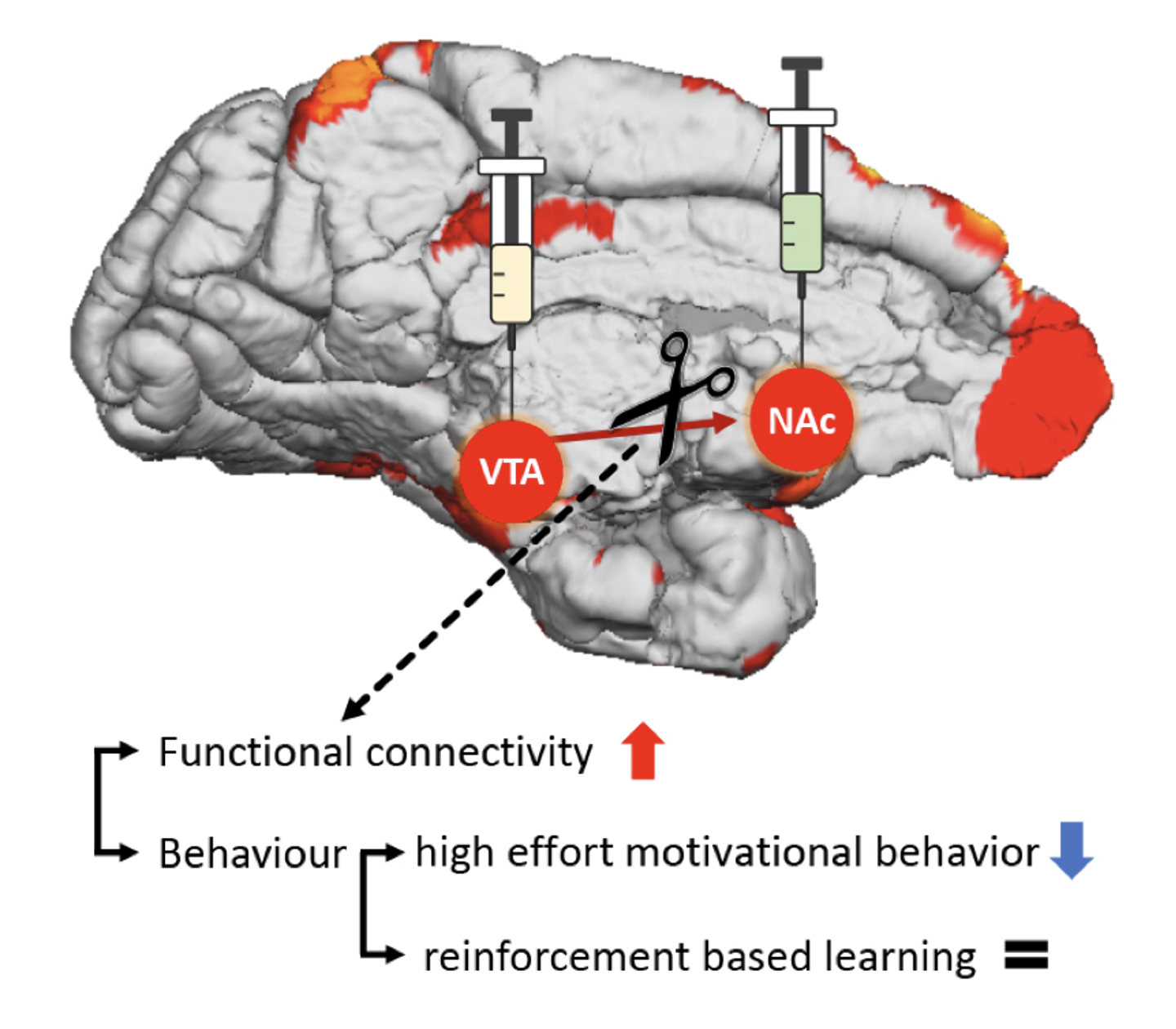News
August 18, 2020
Is the reward always worth the effort?

Imagine taking the classic marshmallow test: would you eat one marshmallow now, or wait a while to receive two? Deciding how much effort to put into a reward-oriented task is influenced by motivation. Brain research into motivational control has highlighted the central role of the chemical messenger dopamine, which is released when the brain expects a reward. Indeed, dopamine is thought to govern many processes, including motivation to act, learning by trial-and-error, enjoyment from things like food and social interactions, and even addictions.
A major reward pathway in the brain that makes and uses dopamine to signal between the nerve cells, or neurons, is the VTA-NAc circuit. This pathway extends from the dopamine-making neurons in the ventral tegmental area (VTA), also called the ventral midbrain, to the target neurons in the nucleus accumbens (NAc), also called the ventral striatum. However, how the VTA-NAc circuit regulates reward-based decision making and learning has remained unclear.
Now, an international collaboration with researchers at Katholic University Leuven (Wim Vanduffel and colleagues), and Kyoto University (Tadashi Isa and colleagues) has shown for the first time that in rhesus macaque monkeys, the VTA-NAc dopamine pathway is required for motivating high-effort behavior. In contrast, it is not required for basic reward-based (reinforcement) learning. The findings were reported in the journal Neuron.
“After we selectively suppressed the VTA-NAc circuit in monkeys, we had expected that reinforcement learning would be poorer, but actually this didn’t happen. However, when we investigated decision making linked to taking on and completing a difficult reward-based task, we found a drop in effort-based motivation,” Tadashi Isa of Kyoto University says.
The team used a cutting-edge two-step technique to selectively but reversibly block the VTA-NAc pathway. In both halves of the brain, a virus was injected into the NAc to deliver a gene with instructions to make a neurotoxin. Copies of the gene were transported backwards within and along neurons to reach the VTA. The VTA was then injected with a different virus containing a gene encoding a protein that, in the presence of a specific antibiotic, switched on the production of neurotoxin.
When the monkeys drank fruit juice containing the specific antibiotic, neurotoxin was made in VTA neurons and prevented dopamine from being released, thereby breaking the VTA-NAc circuit. With the monkeys at rest, functional magnetic resonance imaging revealed that without that circuit, there was nevertheless generally increased connectivity over the whole brain.
Before and after the VTA-NAc pathway was blocked, the monkeys did two reward-driven tasks in which they were presented with two different shapes on a screen. If they stared at certain shapes for long enough, they received a serving of fruit juice.
In the task that tested reinforcement learning, monkeys had to learn if the left or right shape was more likely to offer a reward, even after the researchers swapped and swapped back the assigned winning shape at random points. When the dopamine pathway was shut down, the monkeys retained the ability to associate different shapes with the reward.
In the task that tested goal-directed behavior, certain shapes rewarded more juice after a longer gaze, requiring greater effort and higher motivation level. When the dopamine pathway was shut down, the monkeys consistently shortened their gaze time, preferring to win the smaller but more easily obtained rewards.
The study demonstrates that the VTA-NAc pathway is primarily involved in the regulation of effort-based motivation, and is dissociated from reinforcement learning in primates, the researchers conclude.
Isa says, “Traditionally, according to rodent studies, the midbrain dopamine neurons have been considered to contribute to reinforcement learning, so we have to rethink the functions of the dopamine systems. Also, further understanding the neural systems that control motivation is critical for our mental health, because many people are suffering from depression, addiction, and fatigue, which are all caused by dysfunction of motivational control.”
Paper Information
Pascaline Vancraeyenest#, John T. Arsenault#, Xiaolian Li, Qi Zhu, Kenta Kobayashi, Kaoru Isa, Tadashi Isa and Wim Vanduffel*, “Selective Mesoaccumbal Pathway Inactivation Affects Motivation but Not Reinforcement-Based Learning in Macaques” (2020), Neuron, DOI: https://doi.org/10.1016/j.neuron.2020.07.013
#co-first authors, *corresponding author
